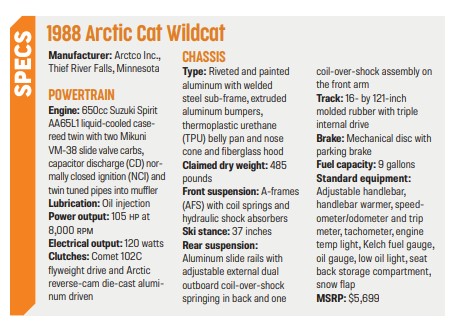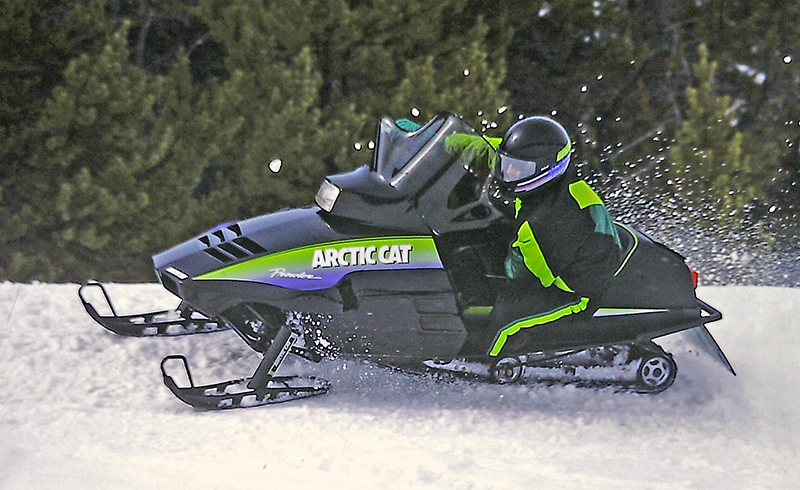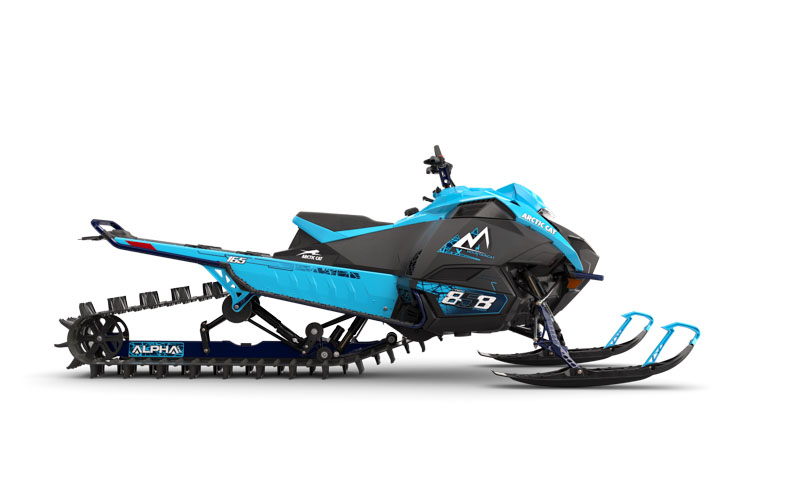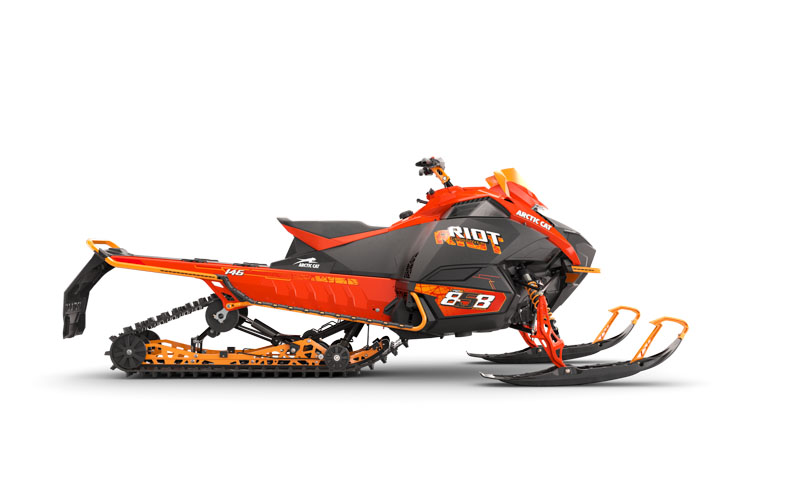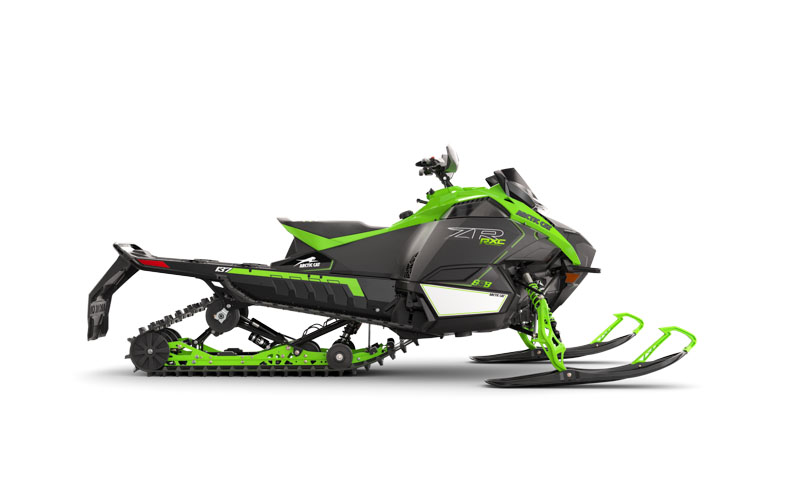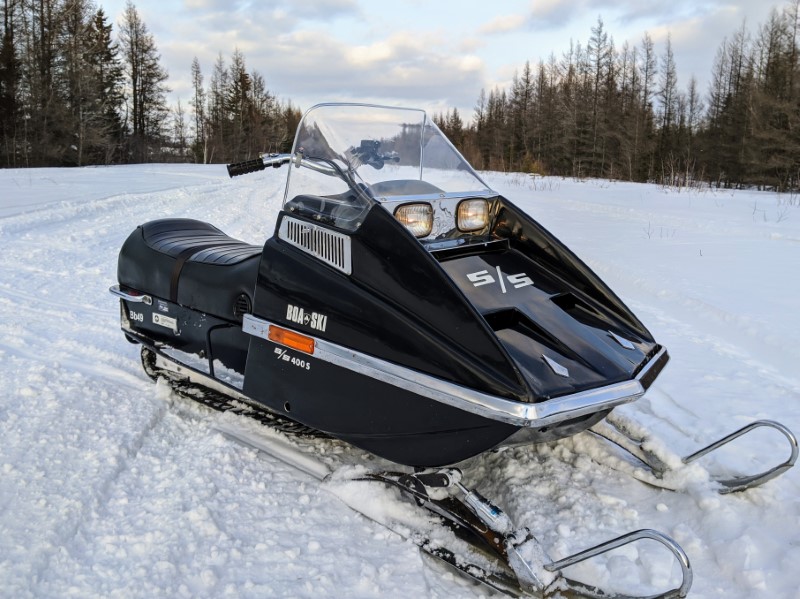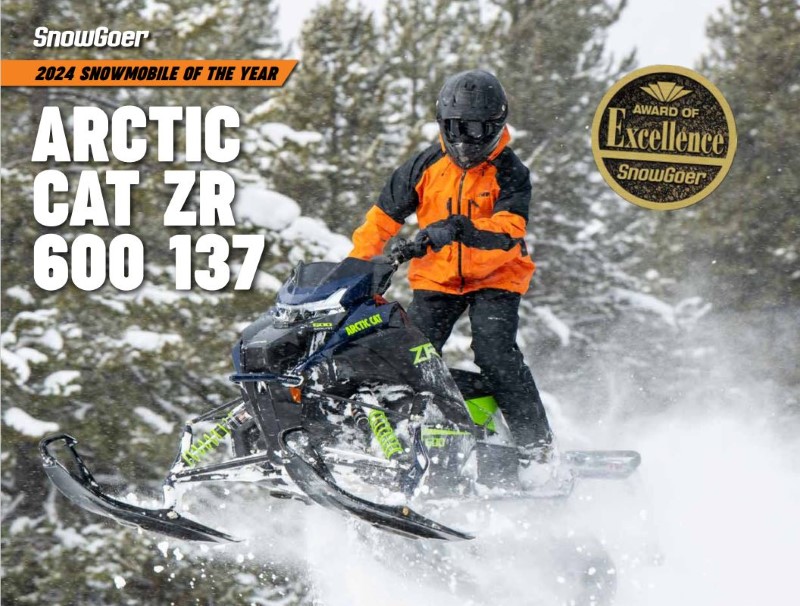
Editor’s Note: In each issue of Snow Goer, International Snowmobile Hall of Fame Journalist David Wells profiles one interesting snowmobile in the sport’s history. This flashback to the 1988 Wildcat was first published in the February 2020 issue of Snow Goer.
The venerable 634 Hirth was probably the most widely used engine of the entire vintage era, available in Arctic Cat, Polaris, Moto-Ski, Rupp, Skiroule, Sno Jet and at least 20 other brands. Ski-Doo and others that didn’t use it often had their own proprietary 650-class engines.
But by 1972, the 650s had virtually disappeared as almost every manufacturer adopted Skiroule founder Rejean Houle’s voluntary ban on engines over 440cc as a safety measure to help wane threatened anti-snowmobile legislation. Although Mercury and OMC (Evinrude and Johnson) did continue to offer modestly powerful 650s for a few more seasons, they received relatively little publicity and did not sell well.
It would be more than a decade before the snowmobiling public could purchase any decently powerful 650 sled again.
The World’s Fastest?
Arctic Cat initiated the abandonment of the industry’s voluntary engine size limitation when it introduced the new Suzuki Spirit engines for 1976, offering a 500cc powerplant with the performance of a 440, but better torque, fuel economy and longevity due partly to lower RPM. Subsequently, industry engine sizes slowly crept up to 600cc when they hit a plateau.
Later, after three years of development, staff in Thief River Falls, Minnesota, introduced what one snowmobile commentator of the day described as, “the most obscenely powerful sled ever – the 1988 Arctic Cat Wildcat 650.” Promoted by Arctic as “possibly the fastest snowmobile on earth,” the Wildcat was powered by an all-new Suzuki liquid-cooled twin that vibrated at idle like a magic fingers bed, but made over 100 horsepower – a historic new mark for a true production sled.
Exactly 100 pre-production Wildcats were built for racers, dealers and further internal evaluation. Production sleds reaching customers had numerous and noticeable changes including a different bulkhead, hood, dash and seat, plus 38mm carbs in place of the 40mm ones found on pre-production units. The new the big-bore Cat was an instant hit.
“The thing pulled like a freight train – torque like I never saw on a sled before,” recalled Russ Audet of Lewiston, Maine, who switched his pre-season order from an El Tigré 6000 to a Wildcat after learning that his riding buddy had ordered one of the new 650 Cats. Fuel economy could be surprisingly efficient, too. “I remember getting 18 mpg on the big trails – the thing just plugged along, never working up a sweat.”
But the new Wildcat wasn’t all sweetness by any means.
“The clutch was really bad,” Audet remembered. “The OEM one was toast at 1,000 miles. I don’t think it could handle the harmonics of a big-torque twin.” Arctco replaced the clutch on his Wildcat with an updated unit that didn’t fare much better.
The Wildcat was also very heavy, had a hard seat and a very stiff suspension despite the outboard shocks and springs that were usually seen on softer-riding skid frames like those used on the earlier IFS Trail Cats. “I swear you could drop it off a roof and it still wouldn’t bottom out,” Audet remarked.
The Wildcat 650 had some serious competition as Polaris also offered an Indy 650 triple for the first time in 1988. Audet recalls that one of his buddies had a 650 Indy, and the two sleds were closely matched on hard pack, but said his Wildcat was definitely “superior” at making fresh tracks through the powder on frozen lakes.
Categorical Success
My old buddy “Dangerous Dan,” who was known to race trains (alongside them, not on the tracks) with his Wildcat, always said that Arctco named the new machine perfectly because it really was “a wild Cat.” And this “wild Cat” definitely re-defined the big-bore performance sled, as all manufacturers soon began offering machines in the over-600 category. As such, it was really the first iteration of the modern big bore liquid twins that power high-end performance two-stroke sleds of the present day.
The Wildcat evolved considerably throughout the model’s lifetime, including soon increasing displacement to 700cc. It lasted 10 years in the Cat lineup but was eclipsed by the Thundercat starting in 1993 as snowmobile engine displacement, horsepower, weight and price all continued to rise.
Nevertheless, the first Wildcat remains one of the more important mile markers in the evolution of today’s ultra-performance snow sleds, and that makes it a very collectable machine among many.
Editor’s Note: Every Snow Goer issue includes in-depth sled reports and comparisons, aftermarket gear and accessories reviews, riding destination articles, do-it-yourself repair information, snowmobile technology and more. Subscribe to Snow Goer now to receive print and/or digital issues.

